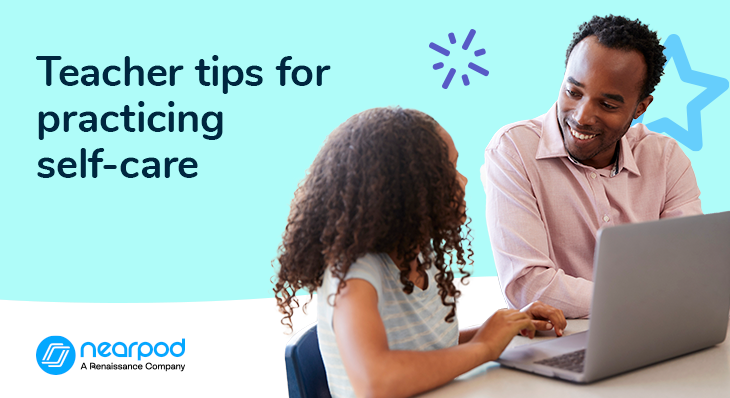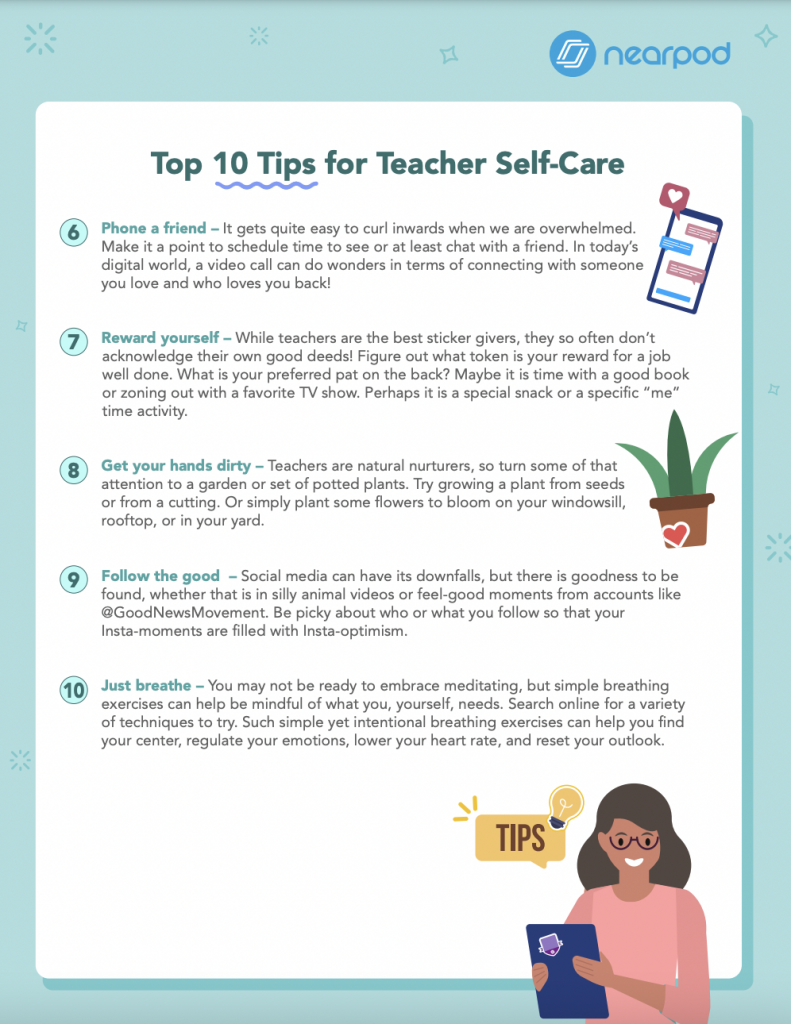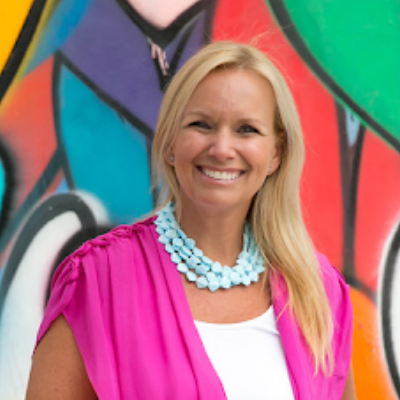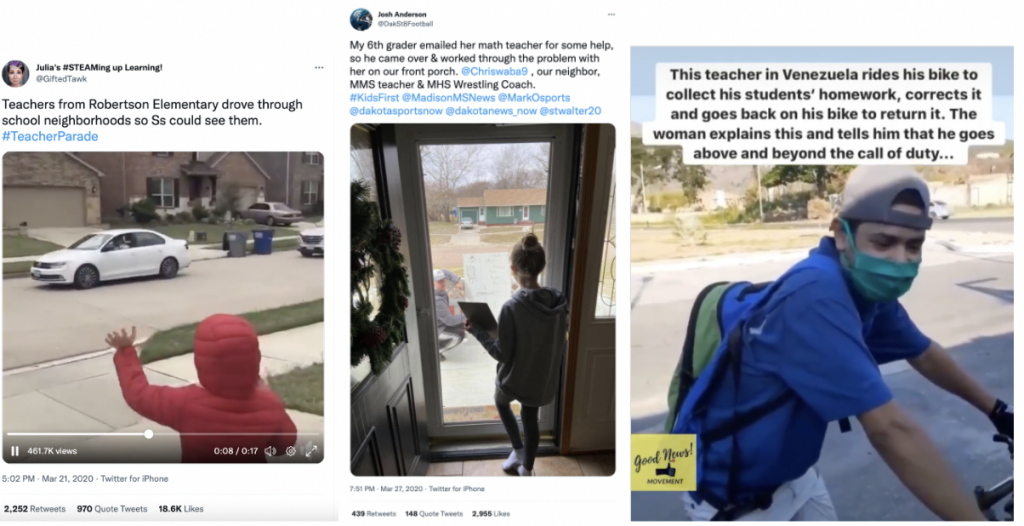
Practicing self-care for teachers: Tips to support educators’ wellbeing
As those working in education have endured many challenges over the past few years resulting in an increase in teacher burnout, a focus on prioritizing teacher self-care and staff’s wellbeing has never been more of a priority. Whether you teach elementary, middle, or high school, practicing self-care is essential for teachers to thrive in a learning environment. When educators prioritize well-being, they build community and foster a healthier, more supportive classroom environment.
The pandemic’s impact on teachers
This pandemic has highlighted the many superhero capes worn by teachers and administrators; administrators working overtime to prep for the many unknowns of the pandemic; teachers showing up in driveways and at doors for some 1:1 instructional TLC; teachers learning new technologies to reach students wherever and whenever they may be learning, and educators fielding the many questions from family members grappling with learning at home. Amid these challenges, staff wellness ideas for teachers have become more crucial than ever to support their incredible efforts.
But as the education world has been upended, so have many educators’ personal lives causing a cascading domino effect. This chain reaction is subtle yet far-reaching. We hear of teachers being “March tired” in December. Teacher burnout is at an alarming high. And current attrition rates threaten the future of our schools. A 2021 RAND Corporation study found the following:
- On average, teachers are working six more hours per week than before the pandemic.
- 1 in 4 teachers was considering leaving their positions by the end of the school year.
- The highest-ranked stressors for these educators were health and mode of instruction.
- Teachers reported frequent job-related stress and symptoms of depression at a much higher proportion than the general adult population.
How can teachers self-care?
In response, there has been much talk about “self-care” for teachers, with lots of simple and valuable ideas such as this Top Ten List.


Supporting teachers and staff’s social and emotional wellbeing
Educators, psychologists, and pediatricians have long been huge advocates of social and emotional learning (SEL), but the initiative behind the acronym is just making its way into the mainstream. Students and teachers need social and emotional learning moments now more than ever. This goes beyond self-care for educators. Look for opportunities to weave the following ideas into the rest of the school year to best support your school culture through social and emotional learning.
”Social and emotional learning (SEL) is the process through which children and adults acquire and effectively apply the knowledge, attitudes, and skills necessary to develop healthy identities, manage emotions and achieve personal and collective goals, feel and show empathy for diverse others, establish and maintain a range of supportive relationships, and make responsible and caring decisions.”
SEL4US
These skill sets are foundational; ones that continually need to be addressed not only during one’s school years but beyond. These are the fundamentals for many life skills that support individuals in finding contentment and success, however, they may define it. And now is the time to adopt SEL as there is funding available through ESSA, Title IV.
“Passion for your work is a little bit of discovery, followed by a lot of development, and then a lifetime of deepening.”
Angela Duckworth, author of Grit: The Power of Passion and Perseverance
You as an administrator know the talent you have at your school site(s) and school culture. So how can you help continue to support your valuable teacher cadre throughout the ups and downs of the rest of the school year and minimize teacher burnout?
Prioritize teacher self-care: 4 ways to support educators’ wellbeing
1. Provide training
Many of those teaching SEL didn’t have explicit instruction in schools, and therefore don’t have a strong model to follow. Furthermore, many adults’ mental health and wellbeing are in flux, negatively impacted by the unknowns and many stressors of the pandemic, never mind everyday life. Teachers can find their own SEL training and bolster their own sense of resilience, perseverance, and optimism on an ongoing basis:
- Provide a daily dose: Seed inspiration by sharing feel-good moments highlighted in such social media accounts as @GoodNewsMovement and @Upworthy on Instagram. Consider pairing this with SEL activities for staff meetings.
- Seek out opportunities: Explore adult-focused SEL professional development opportunities including structured reflection templates and teacher certification options.
- Offer CEs: edWeb provides quality webinars for teachers (who can earn free CEs too)
- Join the conversation: Take part in International SEL Day on March 11, 2022. Find curated resources from across many key organizations.
2. Create space
Teachers don’t have much alone time or personal space by design. Yet consider how you can enhance the good ol’ teachers/faculty room to give your educators a few precious minutes of R&R. Create spaces where teacher self-care strategies can take place. HomeGoods and thrift store shoppers unite!
- Brighten their day: A refresh may be as easy as folding in some calming colors, comfy furniture, and bright, seasonal items.
- Beg, borrow, steal: Take inspiration from teachers’ own classroom environments and lay a carpet, cover a bulletin board with fabric, add a few (real) plants, and finish with personal touches like photos from school events.
- Divide and conquer: Separate the room’s workspaces — delineate an area for the copier or laminator from space meant for eating or resting.
- Give a spoonful of sugar: Consider organizing a treats rotation, where your PTA or school families volunteer to provide energy-boosting snacks by that ever-present coffee machine.
Here are some additional resources you can use:
- Teacher Lounge Makeover Ideas by Kyshia Simmons
- Faculty Room Ideas by Deanna Clayton and Angela Landis
3. Get buy-in or invite feedback
Too often, teachers are the last to weigh in on the adoption of a new program or resources. While they are sleuths who can search for the best, save them precious time by sharing the regular resources that you would like them to consider.
- Share away: Share ideas in a weekly newsletter or on the school website
- Create a feedback loop: Ask your school staff to weigh in on what they like or don’t like via a Google form or similar survey tool.
- Curate resources: Create a school-wide Pinterest or Wakelet board that your whole school community can contribute to. As students to take part in identifying engaging resources as well!
- Spread the love: Don’t task one teacher with SEL, but rather take a schoolwide, cross-curricular approach — how might highlight failing forward in science, perspective taking in history, or empathy through literature look at your school?
4. Share teachable moments
Teachers are masters at celebrating the small wins for students, and yet we often forget to praise one another as adults. Find ways as a leader to recognize the small as well as the big achievements and support social and emotional learning:
- Give sticky praise: During a classroom observation, leave a simple sticky note with a few words acknowledging something amazing that you saw happen in the room.
- Shout from the rooftops: At all-staff meetings, reserve time for team members to share what they personally are proud of. What has gone well? What was a welcomed surprise? We know classrooms are full of heartwarming moments, so take the time to share the stories.
- Provide simple thanks: Work with your PTA to brainstorm ways to thank teachers outside of Teacher Appreciation Week. Maybe it is a surprise delivery of a coffee or a $5 gift card. Maybe it is staff t-shirts. Remember, your teachers are the ones who routinely hand out stickers, so they will be the first to appreciate a simple sign of recognition.
Administrator and teacher self-care
And administrators, don’t forget your own wellbeing. Principal, superintendent, and admin burnout is also a reality. Self-care ideas for teachers are just as important for administrators, too. Simple strategies like deep breathing or leading a small group in a calming breathing exercise can help reduce stress and create a more positive atmosphere. Incorporating physical activity into your routine not only boosts energy but also sets an example for students. Check out these tips from K12Dive to nurture your own wellbeing as you prioritize social and emotional learning for your staff.
New to Nearpod? Teachers can sign up for free below to access these resources, interactive activities, and engaging lessons. Administrators can schedule a call with an expert to unlock the full power of Nearpod for schools and districts.

Darri Stephens is a dedicated LX (learning experience) designer, passionate about creating quality content and programs for kids, families, and educators. With MAs in Education from both Harvard and Stanford, and work experience at best-in-class ed tech organizations including Wonder Workshop, Nickelodeon, and Common Sense Education, she is steeped in the design thinking process and committed to agile and iterative project management, which has resulted in multi-award-winning programs and products.




